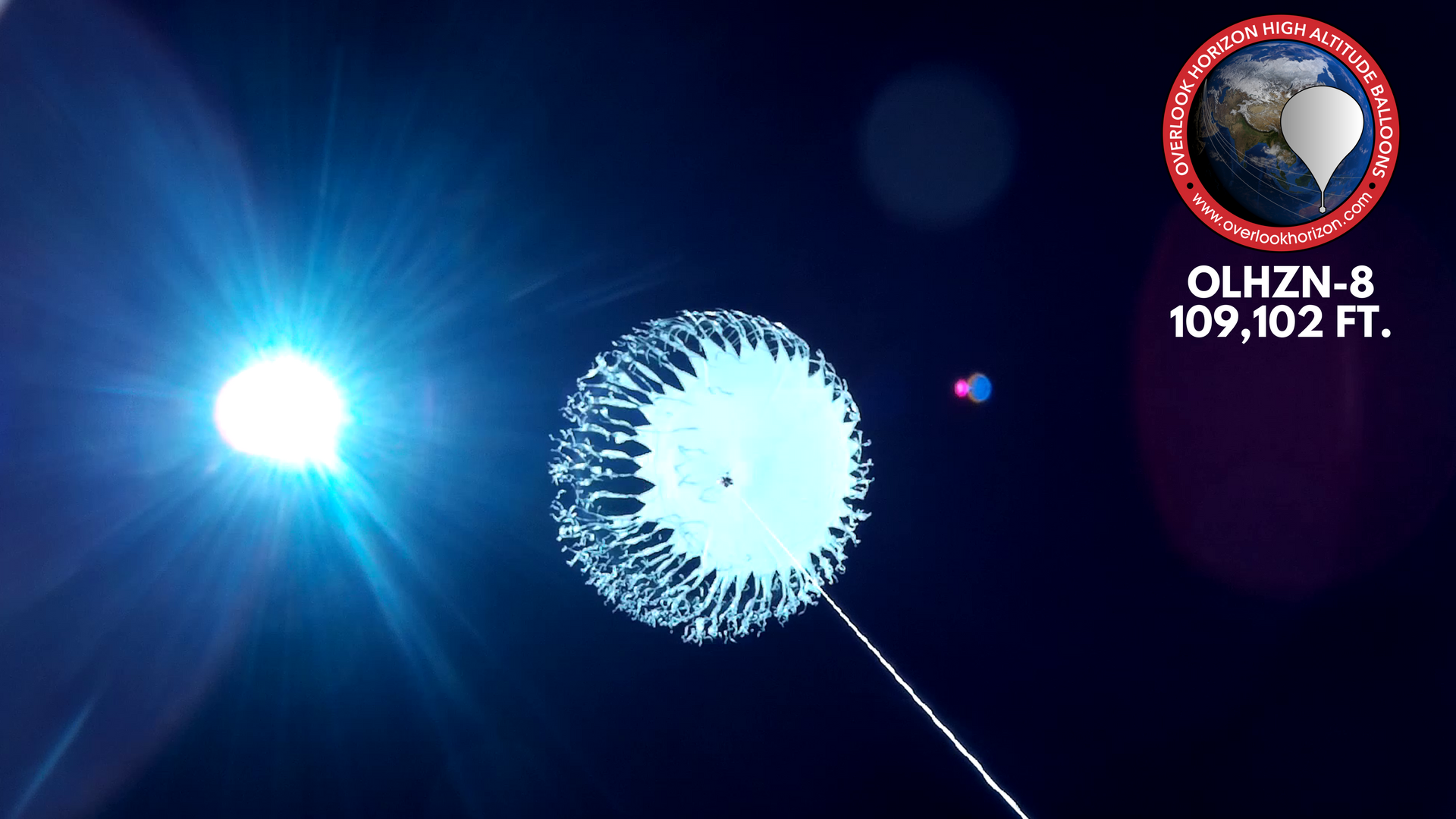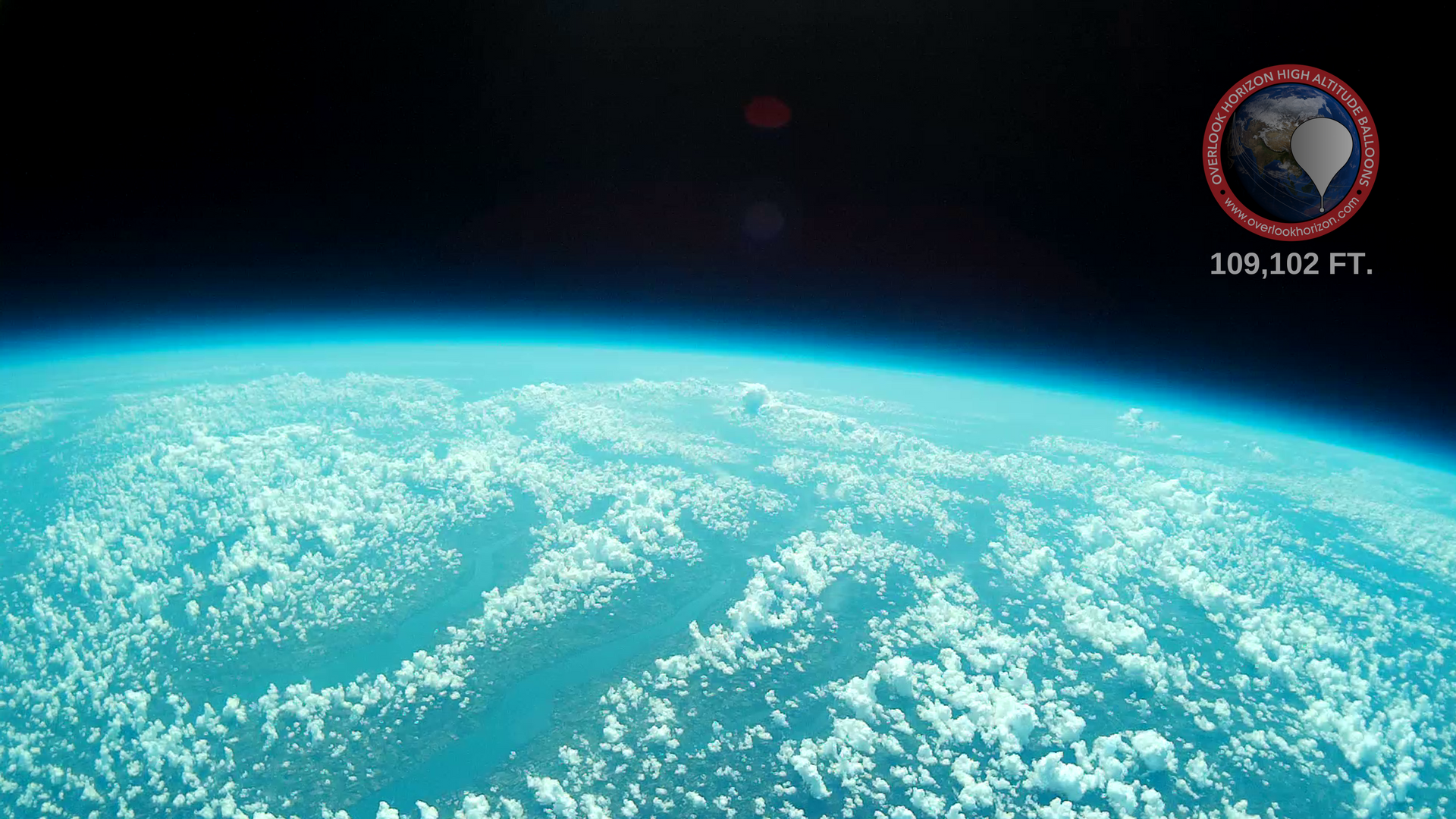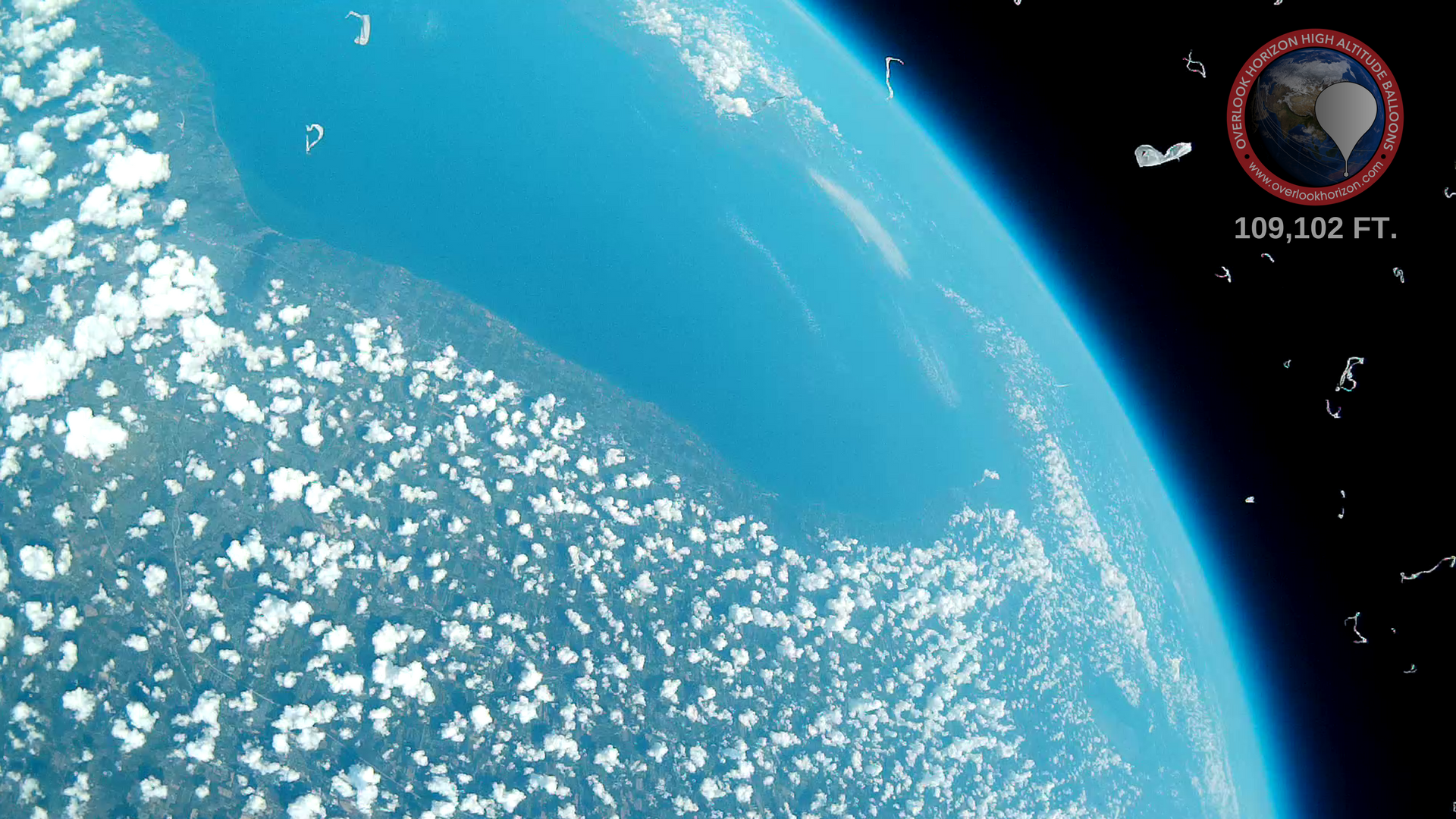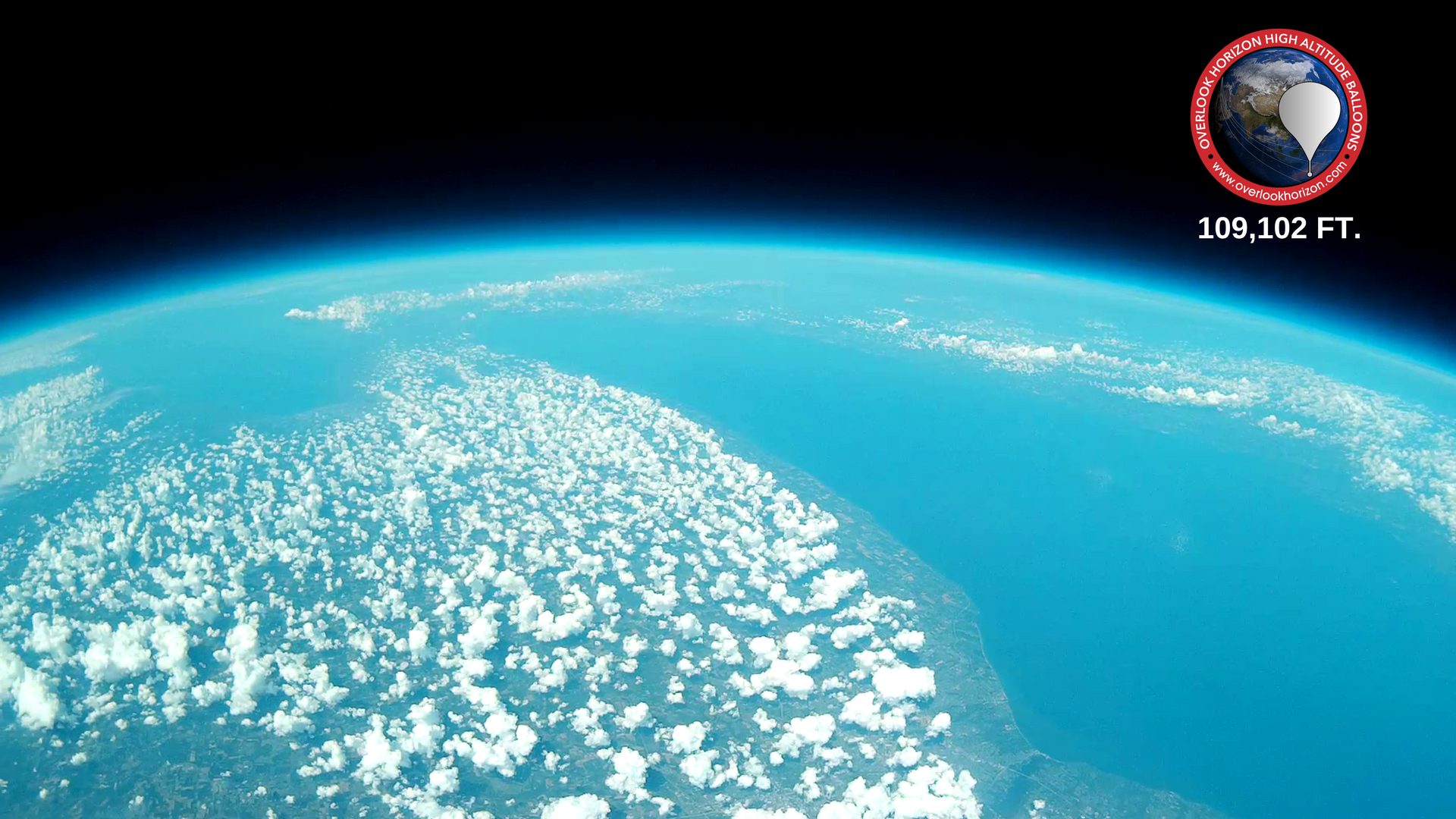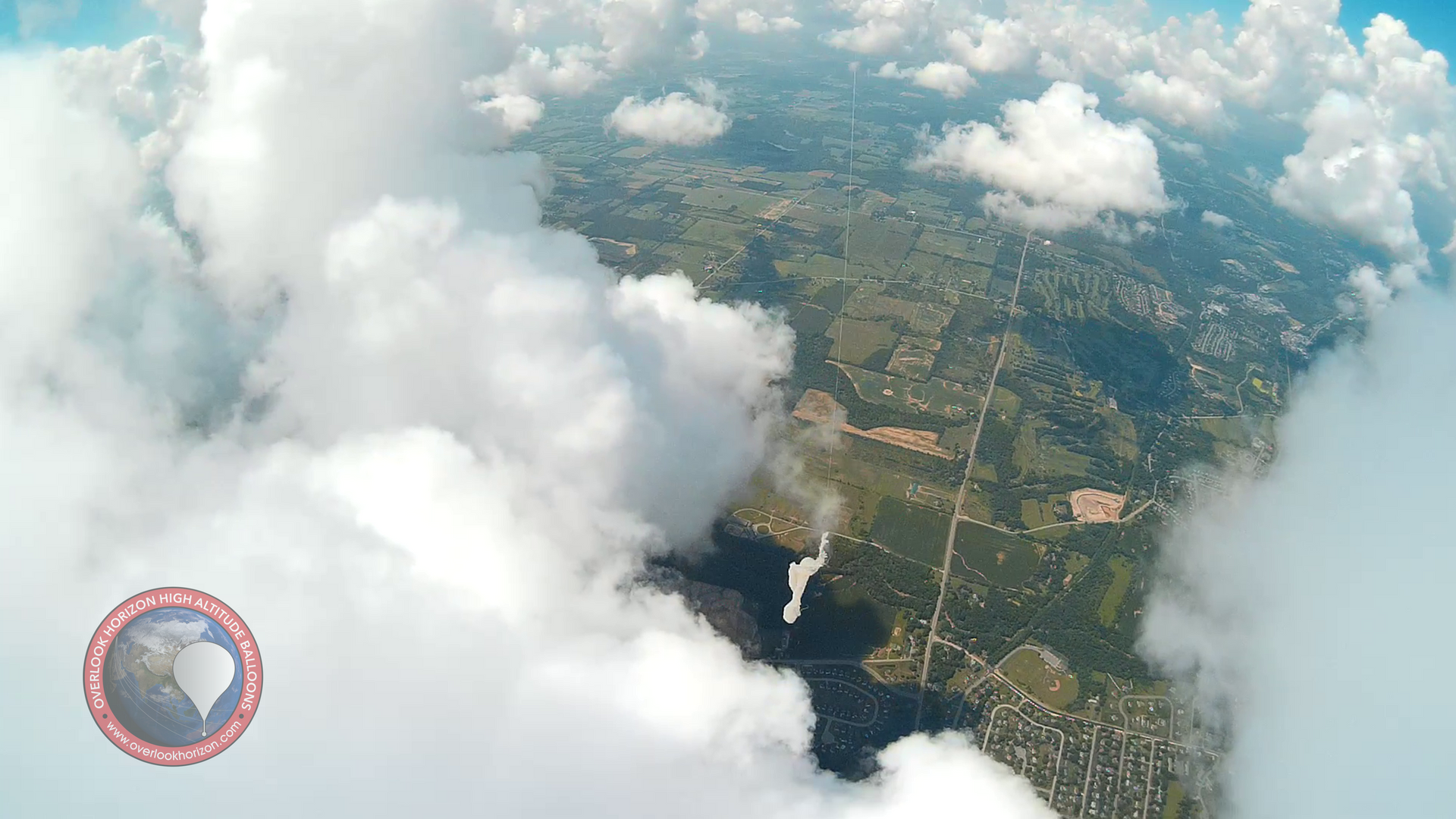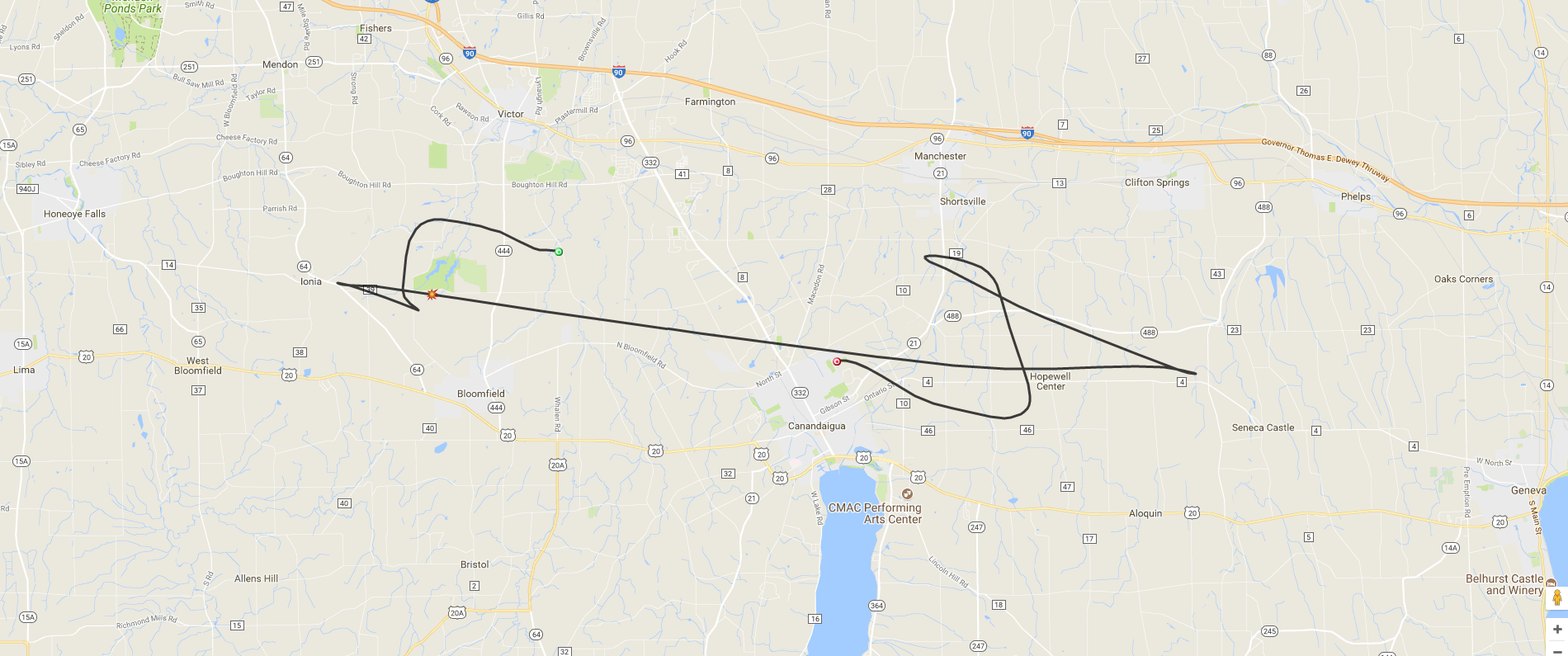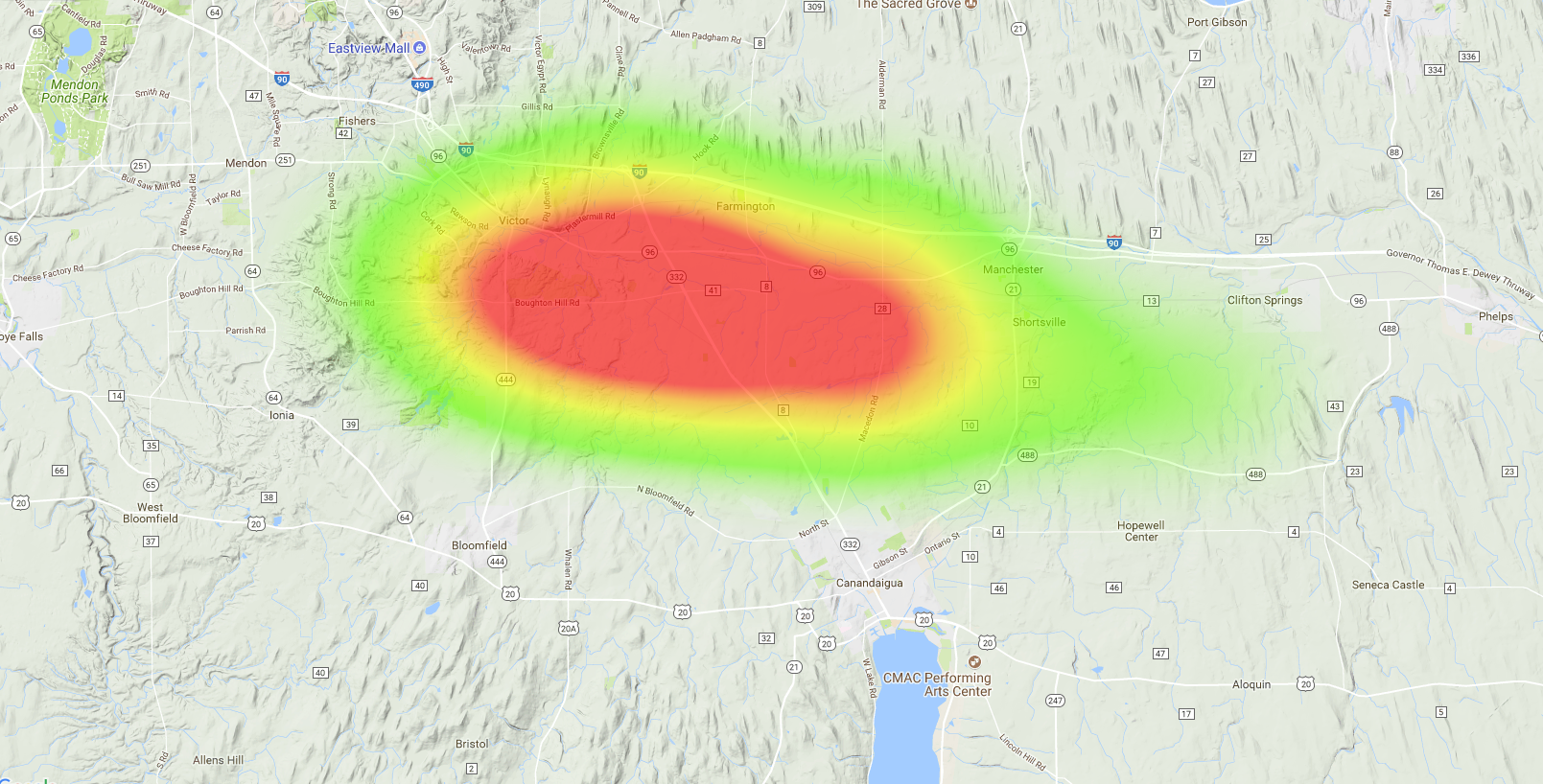Result: Success!! 109,102 FT.
OLHZN-8 was the eighth high altitude weather balloon flight for Overlook Horizon High Altitude Balloons. This flight launched on August 1, 2017 at exactly 10:00:00am ET (14:00:00 UTC). The focus of this flight was to have a short recovery distance and we were also looking to resolve our radio positioning broadcast issues that occurred on OLHZN-7. We thought we had this resolved once and for all after OLHZN-5 successfully transmitted throughout the entire flight, but this issue returned unexpectedly on the last flight due to some voltage drops that occurred when the radio transmitter began its broadcast. This flight again used a third Lightdow LD4000 Camera upwards facing camera recording the balloon to obtain better footage of the balloon burst than we obtained on OLHZN-7.
Flight Day Story
The launch of this flight was unique in that it was our first completely solo launch that was performed by only 1 member of the team. This was simply because the flight was launching in the middle of the week and in the middle of the day so most of the team had to work. Solo launches are much more difficult to perform, particularly when it comes to inflating and sealing the balloon as well as making sure the launch procedures stay on track for an on time launch. Even with those difficulties, we were able to launch on time with a liftoff of exactly 10:00:00am ET (14:00:00 UTC) – on time down to the second!
Around the T-15 minute mark, prior to launching, we were experiencing some issues with one of our cameras failing to power on. It was determined that one of the battery lines for the camera had a loose / broken connection. We were able to quickly piece it together to get the camera to power on, but it was a very weak solution so we were not confident that it would last for the entire flight. Fortunately, upon landing, we discovered that all three cameras performed perfectly and somehow the loose connection stayed in place and capture the entire flight, including some fantastic footage of the balloon burst!
The radio tracking system changes we made for this flight to rectify that issues on OLHZN-7 work almost perfectly. We were able to track the entire flight all the way to 109,102 FT. when it reached our highest achieved altitude yet! The flight computer remained powered-on and functioning throughout the entire flight and did not power cycle at all during flight. We did experience one minor issue with the flight computer that we’ll be looking to resolve on OLHZN-9, which was that the landing alarm cut-out early and stopped sounding at around 1400 ft. in altitude. When this occurred, the flight computer seemingly locked up and stopped recording data so the last 20 seconds of the flight were not recorded with the onboard systems.
Despite the system failing in the last 20 seconds, the most exciting part of the flight came within those last few seconds when our solo recovery “team” was on-site for the landing. We were so close to the landing site that we were able to literally run to the payload and caught the payload line in our hands before it hit the ground! This was incredibly exciting and a very rare opportunity that we may never see again! This event was captured during the live broadcast and you can see the catch as it happened.
Overall, this was our most successful flight to date and was the closest we’ve come to perfection on one of our flights. It was just short of perfect as we did have some very minor issues, but we’d call this a 99.9999% success and we had some amazing achievements:
- Solo launch by only 1 team member
- Perfect on-time launch to the second!
- New record for maximum altitude achieved at 109,102 FT.
- New record for shortest downrange recovery achieved at 5.01 miles
- Nearly perfect flight computer performance
- Flawless in-flight camera performance for all 3 cameras
- Caught the payload as it landed!
Mission Details
Important Info
Live Broadcast
Latest Update
The launch time was bumped up significantly in the final hours prior to launch in an attempt to try to achieve the shortest possible downrange landing distance. Wind predictions were looking great for a Tuesday morning launch that would allow us a single digit recovery distance. Unfortunately, our launch team was very slim due to this launch time, but we had to try for the shortest recovery distance possible! This also gave us the opportunity to perform a solo launch procedure. These images were the final flight predictions from the midnight forecast that we operated off of with an on time launch of exactly 10:00:00am ET / 14:00:00 UTC. Another prediction was available around 6:00am ET on launch day, but our FAA notifications had to be completed no later than 6 hours prior to launch time so the launch time couldn’t change after this point.

